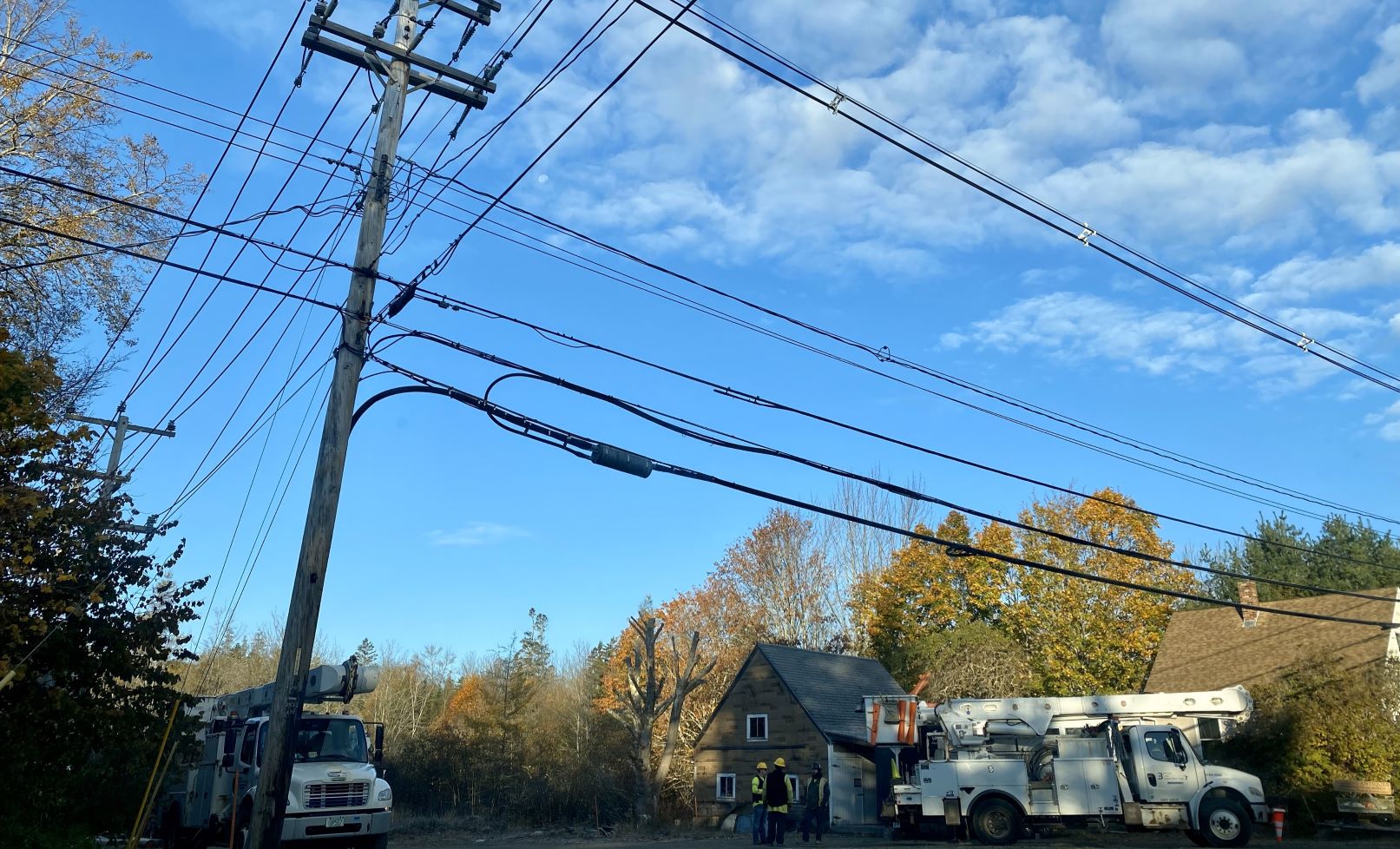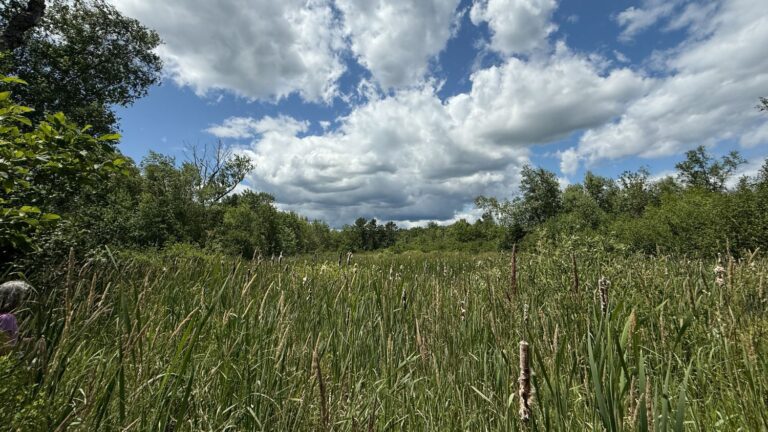In my (admittedly short) career as a journalist, I have never had as many conversations about a single topic as I have on Question 3, the referendum on this year’s ballot asking Mainers whether they want to replace Maine’s two investor-owned utilities with Pine Tree Power, a nonprofit that would consist of an elected and appointed board, support staff, and a private third-party company managing daily operations of the grid.
This is perhaps the most complicated (and consequential) issue I have ever covered. Over the past month, I conducted more than a dozen interviews, spent more than a hundred hours reading news reports, white papers, legislation and watching webinars and debates between the two sides.
I went through several online training sessions offered by ISO-NE (the nonprofit that helps keep the lights on throughout New England). I am deeply grateful to everyone who gave me their time (in some cases, many hours!) while trying to make sense of this, and, as with every piece I write, am sorry that I couldn’t include all of it in print.
But all of that research was in service of trying to understand the complexities around our electric system, what it looks like now and what it might look like in the future, and to translate that to you, our readers.
I wrote a 4,165-word story on Question 3 that we published earlier this week, in addition to an earlier piece explaining how the grid works. That’s a lot, I know.
But context is key, and there’s important context in those stories. I highly recommend you read both. Electricity is the foundation of modern society, and there’s a lot to know about how the system functions (and doesn’t). Those stories are a start.
I also realize, however, that people are busy. So here’s the CliffsNotes version of my most recent piece, A Q&A on Question 3, the Pine Tree Power referendum.
How would the new utility work?
Pine Tree Power would be run by a 13-member board, staff to support them, and a private third-party operator they would hire to manage the day-to-day operations of the grid.
Pine Tree Power would take over what CMP and Versant own now — the poles, wires, substations and other associated infrastructure through which electricity flows.
If the ballot question passes, it would change who is responsible for delivering electricity to customers, but would not change who owns electricity production or supply, like wind turbines, solar farms or natural gas plants.
How will this affect my rates?
This is the multi-billion dollar question, and it’s impossible to answer with certainty.
Whether and when rates would be lower or higher depends on how much Pine Tree Power pays to acquire the assets of CMP and Versant, how long the transition takes and how much court fees add to the price, how much it will cost to staff and run the new utility, what it would pay a third-party operator to manage the system, what kind of investments it makes in the grid, and whether that would offset the money CMP and Versant now send to their parent companies as profit.
It also depends on whether we’re talking about rates tomorrow or fifteen years from now. Mainers’ overall electricity bills might be lower this winter, but that has nothing to do with the referendum or with CMP and Versant — it’s because the price of natural gas, which we depend on to produce most of our electricity in New England — has fallen, as Tux Turkel wrote about this week for the Monitor.
An independent analysis commissioned by the Maine Public Utilities Commission suggested transitioning to a publicly-owned utility would raise rates for 10 years but lower them over the next 30 years. The two sides dispute the effect on rates, with each having conducted their own research that falls in their favor.
Pine Tree Power has said the primary savings will come from not having to send profits back to shareholders.
Abraham Silverman, director of the Non-Technical Barriers to the Clean Energy Transition initiative at Columbia University, who has studied energy policy for decades, said policy experts “vehemently disagree” on whether consumer-owned utilities can deliver power more cheaply or effectively than investor-owned utilities, and it is “very difficult to answer that question.”
Will Pine Tree Power be better at meeting the state’s climate goals?
As we become more reliant on electricity to charge our cars, and heat and cool our homes and businesses, the state’s grid operators (whether that’s CMP and Versant or Pine Tree Power) will have an increasingly important role to play in transitioning away from fossil fuels.

Utility companies in Maine generally can’t build or own any type of electricity production (like wind turbines, solar farms or hydroelectric dams), a rule that would apply to Pine Tree Power just as it does to CMP and Versant.
But they are responsible for figuring out where new power lines get built and upgrading infrastructure so it can handle the increase in electricity that comes with adding solar panels to a roof or building wind turbines on a ridge top, and we are going to need many more miles of power lines and other infrastructure upgrades to accommodate all of that electricity use.
Advocates for Pine Tree Power say CMP and Versant have been slow to connect new wind and solar to the grid, a process known as “interconnection,” and slow to engage publicly in climate change planning.
Connecting new energy generators, however, is a nationwide problem with no simple fixes. Across the country, there are thousands of projects waiting in line to hook up to the grid, and the costs to do so have skyrocketed.
“The solution to the interconnection debacle is to plan and build out the transmission system to meet the anticipated need for clean generation,” said Silverman. “There is no substitute.”
Whether a publicly-owned utility would be faster at hooking up renewable generators or more successful in building transmission lines is unclear. As we saw with the CMP corridor, fights over new transmission lines can be costly, fierce and lengthy.
The current utilities are required under a law passed last year to file new 10-year plans for adapting the grid to climate change. Pine Tree Power, for its part, would be required by law to help the state meet its clean energy goals.
My co-newsletter writer, Annie Ropeik, wrote a piece for Inside Climate News last week that has more on Question 3 and climate, and helped with reporting on our Question 3 piece.
I thought one of the most poignant quotes from my interviews was something said to me by energy expert Jennifer Kallay, who has served on the board of the Wakefield Municipal Gas & Light Department, a publicly-owned utility in Massachusetts, for six years.
“It’s not a decision, it’s a journey. People need to know that they’re signing up for a journey and not a one-day vote.”







